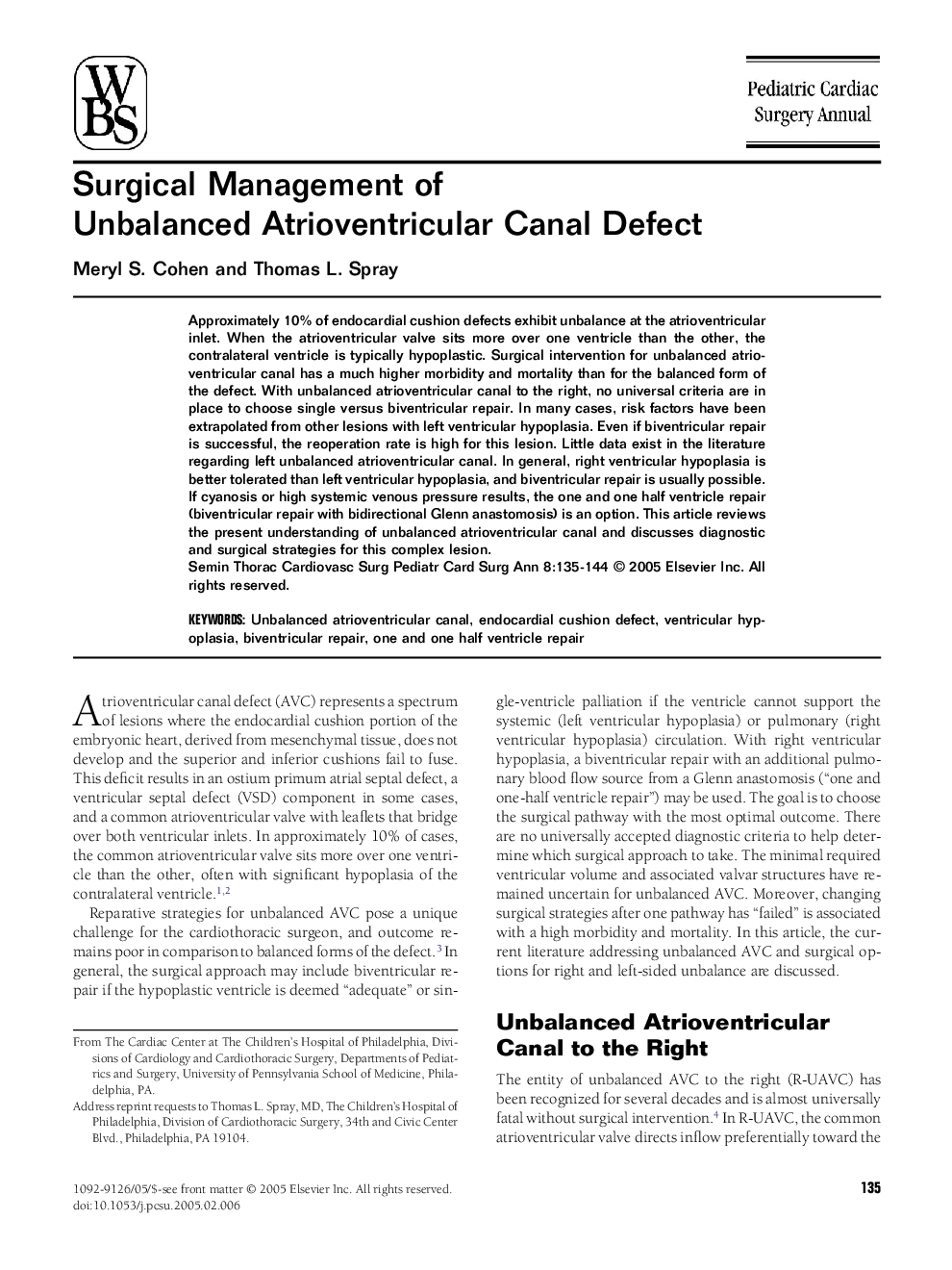| Article ID | Journal | Published Year | Pages | File Type |
|---|---|---|---|---|
| 9184715 | Seminars in Thoracic and Cardiovascular Surgery: Pediatric Cardiac Surgery Annual | 2005 | 10 Pages |
Abstract
Approximately 10% of endocardial cushion defects exhibit unbalance at the atrioventricular inlet. When the atrioventricular valve sits more over one ventricle than the other, the contralateral ventricle is typically hypoplastic. Surgical intervention for unbalanced atrioventricular canal has a much higher morbidity and mortality than for the balanced form of the defect. With unbalanced atrioventricular canal to the right, no universal criteria are in place to choose single versus biventricular repair. In many cases, risk factors have been extrapolated from other lesions with left ventricular hypoplasia. Even if biventricular repair is successful, the reoperation rate is high for this lesion. Little data exist in the literature regarding left unbalanced atrioventricular canal. In general, right ventricular hypoplasia is better tolerated than left ventricular hypoplasia, and biventricular repair is usually possible. If cyanosis or high systemic venous pressure results, the one and one half ventricle repair (biventricular repair with bidirectional Glenn anastomosis) is an option. This article reviews the present understanding of unbalanced atrioventricular canal and discusses diagnostic and surgical strategies for this complex lesion.
Related Topics
Health Sciences
Medicine and Dentistry
Cardiology and Cardiovascular Medicine
Authors
Meryl S. Cohen, Thomas L. Spray,
